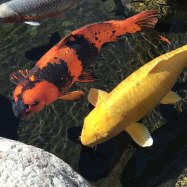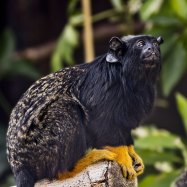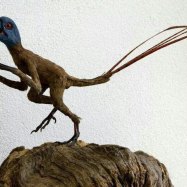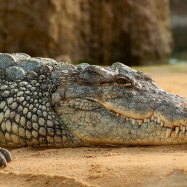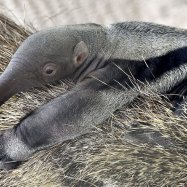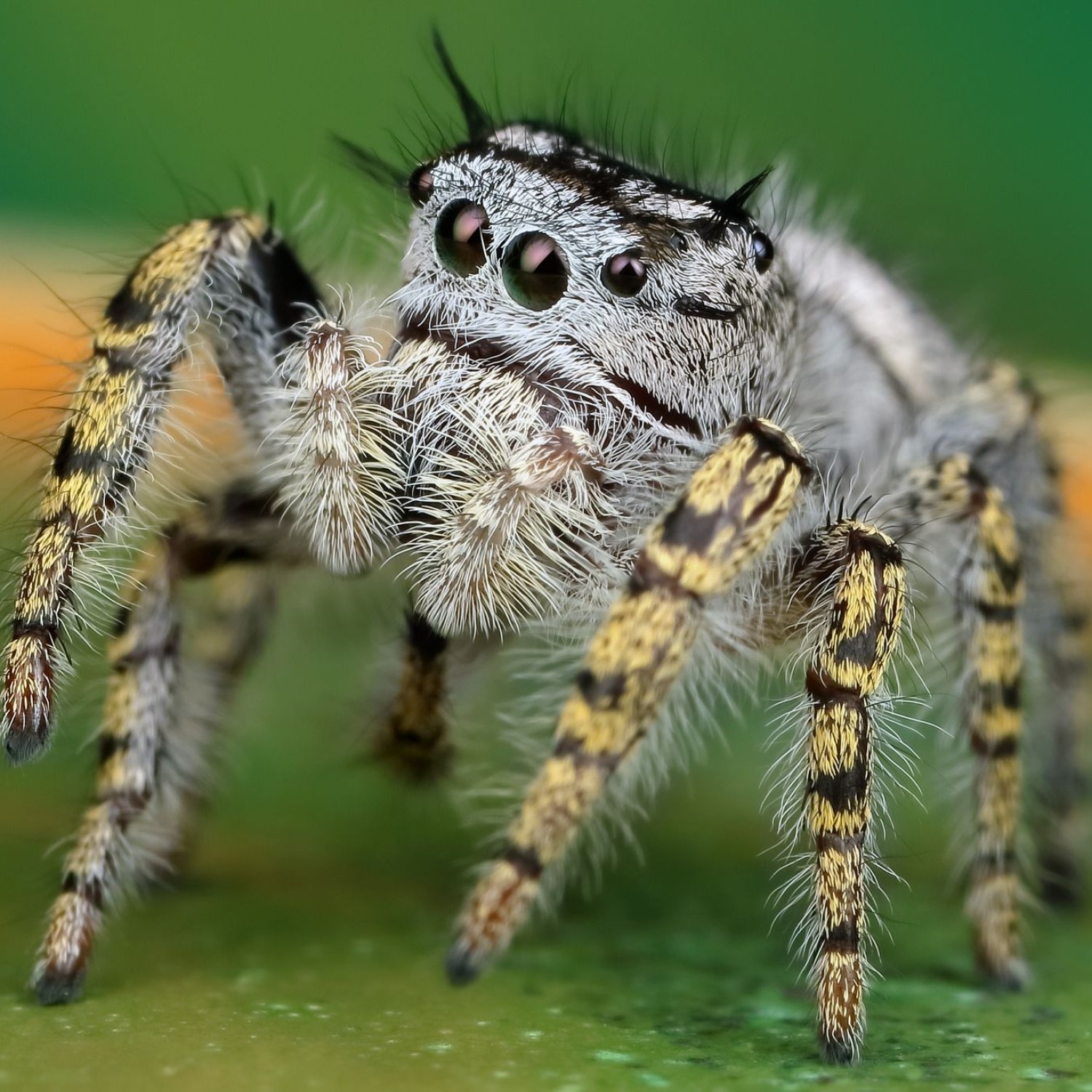
Jumping Spider
0.04 to 0.98 inches (1 to 25 millimeters)
Did you know that the jumping spider, belonging to the Salticidae family, is one of the smallest but most skilled hunters in the animal kingdom? Ranging from 0.04-0.98 inches, this tiny spider jumps towards its prey with incredible accuracy and speed. Don't be fooled by its size, this compact creature is a force to be reckoned with! #jumpingspider #salticidaefamily #smallsizemightyhunters
Animal Details Summary:
Common Name: Jumping Spider
Kingdom: Animalia
Habitat: Grasslands, forests, deserts, and urban areas
The Fascinating World of Jumping Spiders: From Acrobatic Abilities to Unique Hunting Techniques
As the name suggests, jumping spiders are known for their impressive jumping abilities and are often referred to as the most agile and acrobatic spiders in the animal kingdom. These tiny creatures belong to the Salticidae family and can be found in various habitats worldwide, including grasslands, forests, deserts, and even urban areas. But there is much more to these tiny arachnids than just their jumping skills.In this article, we will explore the fascinating world of jumping spiders, from their physical characteristics to their unique hunting techniques and more Jumping Spider.
The Basics: Classification and Habitat
Jumping spiders belong to the kingdom Animalia and the phylum Arthropoda, making them part of the larger group of invertebrates. They are also classified under the class Arachnida, which includes spiders, scorpions, and ticks.The order to which jumping spiders belong is Araneae, and within this order, they are categorized under the Salticidae family. This family consists of over 600 genera and more than 6,000 species of jumping spiders. They are found in almost all regions of the world, except for Antarctica, making them a widespread and diverse group of spiders.
When it comes to habitat, jumping spiders are incredibly adaptable and can be found in a variety of environments. They are commonly found in grasslands, forests, and deserts, but they have also successfully established themselves in urban areas. They are highly adaptable to changes in their surroundings, making them resilient and able to thrive in different conditions.
Physical Characteristics: The Unique Traits of Jumping Spiders
Jumping spiders are known for their distinctive appearance, and they are quite different from other spider species Jungle Carpet Python. They have eight legs, just like all other arachnids, but their body shape is quite different. Jumping spiders have a small and compact body, which allows them to move swiftly and perform their jumps with precision.One of the most striking features of jumping spiders is their large and forward-facing eyes. Unlike other spiders that rely on touch and vibrations to capture their prey, jumping spiders have excellent vision and can even see colors. They use this advanced sight to track and stalk their prey, making them skillful hunters.
Another unique characteristic of jumping spiders is their colorful and patterned body. Their coloration can vary depending on the species, ranging from vibrant greens, blues, and yellows to more muted browns and grays. Some species also have interesting patterns and designs on their body, making them a sight to behold.
Interestingly, some jumping spiders are also known to exhibit behaviors that are quite uncommon in other arachnids. Some can mimic ants or other insects to avoid being preyed upon, while others are known to perform elaborate courtship rituals to attract mates.
The Jumping Abilities of Jumping Spiders
It's no surprise that jumping spiders have earned their name for their incredible jumping abilities. These spiders can jump up to 50 times their own body length, which is a remarkable feat considering their small size. To put it into perspective, this would be equivalent to a human jumping over 300 feet in one leap.But how do these tiny spiders manage to jump such great distances? The answer lies in their unique anatomy and hunting techniques. Jumping spiders have specialized muscles in their legs that allow them to store and release energy rapidly, propelling them forward with great force. They also use their silk as a safety line while jumping, helping them to maintain their balance and ensuring they don't get injured.
Apart from their impressive jumping abilities, jumping spiders are also highly skilled climbers. They can scale vertical surfaces with ease, thanks to their specialized adhesive hairs on their feet that allow them to stick to different surfaces.
Feeding Habit: Efficient Predators
Jumping spiders are known to be fierce and efficient predators, despite their small size. They primarily feed on a variety of insects, including flies, bees, and caterpillars. Their hunting technique is quite extraordinary. They do not spin webs like other spiders but instead use their agility and excellent vision to hunt their prey.First, a jumping spider will stalk its prey, using its superior vision to track its movements. Once it has gotten close enough, it will pounce on its unsuspecting victim with a sudden burst of speed. Using its powerful jaws, the jumping spider will inject venom into its prey, paralyzing it immediately. This venom also contains enzymes that help digest the prey's tissues, allowing the spider to consume its meal with ease.
Jumping spiders are known to be strategic hunters and will often plan their approach, taking into consideration the potential movements of their prey. They are also quite adaptable and can change their hunting tactics if needed, making them highly efficient predators.
Conclusion
In conclusion, the jumping spider is a remarkable creature that fascinates and intrigues scientists and nature enthusiasts alike. From their impressive jumping abilities to their unique hunting techniques and colorful appearance, these tiny spiders have captured our attention and imagination.Despite their small size, jumping spiders play a crucial role in maintaining the balance of their ecosystems. They are efficient predators, but they also serve as prey for other animals, helping to sustain the food chain. They are also important for controlling insect populations, making them an essential part of the natural world.
So the next time you come across a jumping spider, don't be afraid. Instead, take a moment to marvel at its incredible abilities and appreciate the beauty and complexity of nature's smallest acrobats.

Jumping Spider
Animal Details Jumping Spider - Scientific Name: Salticidae
- Category: Animals J
- Scientific Name: Salticidae
- Common Name: Jumping Spider
- Kingdom: Animalia
- Phylum: Arthropoda
- Class: Arachnida
- Order: Araneae
- Family: Salticidae
- Habitat: Grasslands, forests, deserts, and urban areas
- Feeding Method: Predatory
- Geographical Distribution: Worldwide
- Country of Origin: N/A
- Location: N/A
- Animal Coloration: Varies depending on species; can be colorful and patterned
- Body Shape: Small and compact with short legs
- Length: 0.04 to 0.98 inches (1 to 25 millimeters)
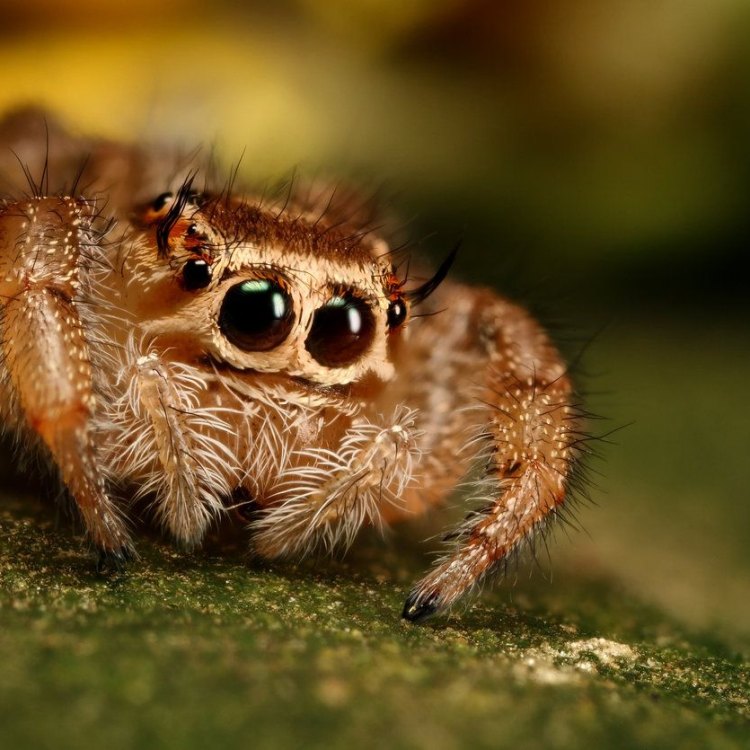
Jumping Spider
- Adult Size: Varies depending on species, but generally small
- Average Lifespan: Varies depending on species, but generally up to 2 years
- Reproduction: Sexual
- Reproductive Behavior: Males perform elaborate courtship displays
- Sound or Call: Do not produce sounds or calls
- Migration Pattern: Do not migrate long distances
- Social Groups: Solitary
- Behavior: Active hunters that rely on vision and jumping ability to catch prey
- Threats: Habitat loss, pollution, climate change
- Conservation Status: Varies depending on species
- Impact on Ecosystem: They play a role in controlling insect populations
- Human Use: Some species are kept as pets
- Distinctive Features: Eight eyes, excellent vision, ability to jump long distances
- Interesting Facts: Jumping spiders are known for their incredible vision and ability to calculate distance when jumping
- Predator: Various predators depending on the species
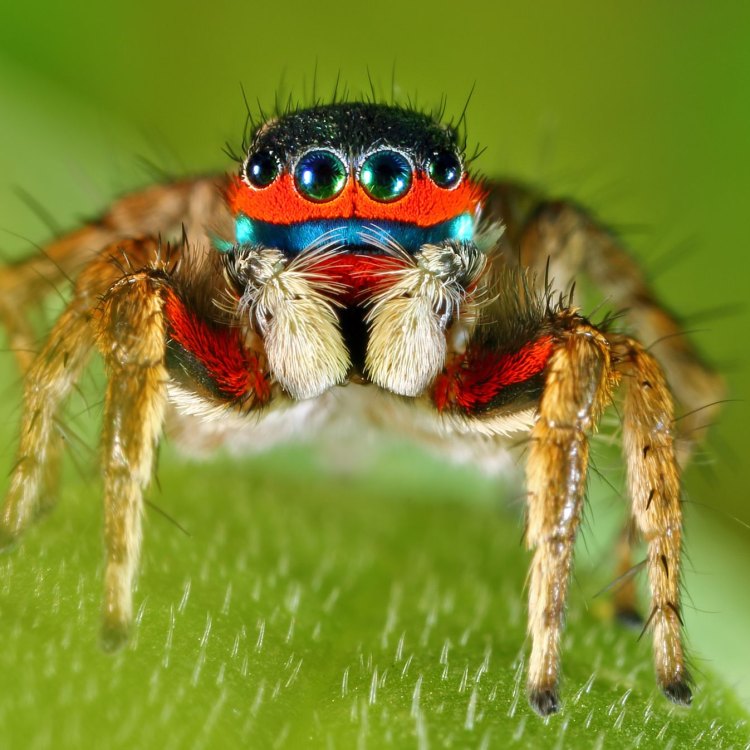
Salticidae
The Marvelous Jumping Spider: An Impressive Hunter with Unique Abilities
The animal kingdom is full of fascinating creatures, each with its own unique characteristics and abilities. One such creature is the jumping spider, a small yet impressive arachnid known for its incredible jumping skills and remarkable vision. With a distinctive appearance and interesting behaviors, the jumping spider has captured the attention of both scientists and nature enthusiasts alike. In this article, we will delve into the world of jumping spiders, exploring their physical features, behavior, impact on the ecosystem, and human interaction PeaceOfAnimals.Com.The Basics: Size, Lifespan, and Reproduction
Jumping spiders belong to the family Salticidae, which includes over 6,000 known species. They can be found all over the world, inhabiting diverse environments such as forests, grasslands, and even urban areas. The average size of a jumping spider varies depending on the species, but they are generally small, with most species measuring less than 1 inch in length. However, despite their small size, jumping spiders have a relatively long lifespan compared to other spiders, with an average lifespan of up to 2 years.Like most spiders, jumping spiders reproduce sexually, with males and females coming together to mate. However, jumping spiders are known for their unique reproductive behavior, with males performing elaborate courtship displays to attract females. These displays can include dancing, drumming, and even offering gifts of prey to the female. This courtship ritual not only helps to attract a mate but also allows the male to assess the female's receptiveness, leading to more successful mating attempts.
Beyond the Ordinary: Vision and Jumping Ability
What sets jumping spiders apart from other spiders is their exceptional vision and jumping ability Jackal. While most spiders have eight eyes, jumping spiders have enlarged principal eyes perched on the front of their heads, giving them an almost cartoonish appearance. These large eyes, along with their additional six smaller eyes, give jumping spiders excellent vision, allowing them to see in great detail and from multiple angles. This extraordinary vision also enables them to differentiate between colors, making them one of the few spiders that can see in color.But it's not just their vision that's impressive; jumping spiders also have the ability to calculate distance when jumping, making them skilled and accurate hunters. Using their vision and the sensory hairs on their legs, jumping spiders can accurately measure the distance to their prey and leap with precision to catch it. This unique ability not only helps them to catch their prey but also allows them to navigate and explore their surroundings with ease.
Active Hunters: Behavior and Diet
Jumping spiders are active hunters, meaning they do not build webs to catch their prey but instead rely on their jumping skill and vision. They hunt a wide range of prey, including insects, other spiders, and even small vertebrates like lizards and frogs. Their hunting technique involves stalking their prey, often using their colorful and patterned bodies to camouflage and hide before launching a surprise attack. With their quick reflexes and precise jumping, jumping spiders are successful hunters that can catch prey much larger than themselves.Apart from their hunting behavior, jumping spiders also have a unique way of communicating with each other. They use a form of visual signaling, where they make specific movements and patterns with their legs to convey messages, such as signaling their readiness to mate or to warn off potential threats.
The Dangers: Threats and Conservation Status
As with many other species, jumping spiders are facing various threats that put their populations at risk. The main threat to jumping spiders is habitat loss, as their natural habitats are being destroyed or altered due to human activities like deforestation and urbanization. Pollution and climate change are also factors that can negatively impact jumping spiders, affecting their food sources and overall survival.The conservation status of jumping spiders varies depending on the species, with some being considered threatened while others are not. However, there is a lack of comprehensive data on jumping spider populations, making it difficult to accurately assess their conservation status. Therefore, it is crucial to continue studying and monitoring these unique creatures to better understand their population dynamics and implement effective conservation efforts.
An Important Role: Impact on the Ecosystem
Like all organisms, jumping spiders play a significant role in their ecosystem. As active hunters, they help to control insect populations, maintaining a balance within the ecosystem. Without jumping spiders, insect populations can grow unchecked, causing disruptions to the food chain and potentially leading to ecological imbalances. Therefore, jumping spiders are essential for maintaining a healthy and functioning ecosystem.Interactions with Humans: From Pets to Fear
The relationship between jumping spiders and humans is an interesting one. On one hand, some species of jumping spiders are being kept as pets, mainly because of their unique appearance and behavior. With proper care, jumping spiders can thrive in captivity, providing entertainment and educational value for many pet owners. However, on the other hand, some people fear jumping spiders due to their quick movements and ability to jump. This fear is often unfounded, as jumping spiders are generally harmless to humans and only bite when provoked or threatened.Interesting Facts and Predators
Jumping spiders have some fascinating and unique characteristics that make them stand out in the animal kingdom. For example, some jumping spiders have the ability to see ultraviolet light, which helps them to detect UV-reflecting patterns on flowers and other objects. This ability may also aid them in identifying and choosing potential mates.Jumping spiders also have an impressive immune system, capable of producing a wide variety of antimicrobial compounds. These compounds protect the spiders from harmful bacteria and fungi, making them resilient and adaptable creatures.
As for potential predators, jumping spiders have various predators depending on the species and their habitat. Birds, wasps, ants, lizards, and other spiders are among the many predators that may target jumping spiders. However, their exceptional vision and jumping ability often help them to evade these predators successfully.
In Conclusion
The jumping spider is truly a marvel of nature, with its unique features and abilities that set it apart from other spiders. From their enlarged and colorful eyes to their impressive jumping skills, these creatures continue to fascinate and captivate us. As we continue to learn more about jumping spiders, it is essential to conserve their habitats and protect their populations, for they play an important role in maintaining a thriving ecosystem. So next time you spot a jumping spider, take a moment to appreciate its extraordinary characteristics and the valuable role it plays in the complex web of life.
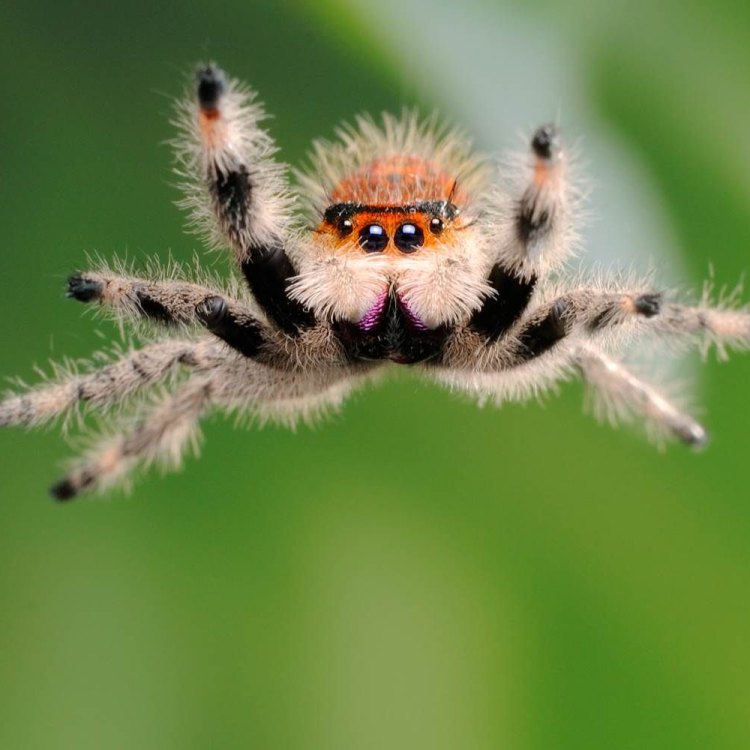
The Fascinating World of Jumping Spiders: From Acrobatic Abilities to Unique Hunting Techniques
Disclaimer: The content provided is for informational purposes only. We cannot guarantee the accuracy of the information on this page 100%. All information provided here may change without prior notice.


